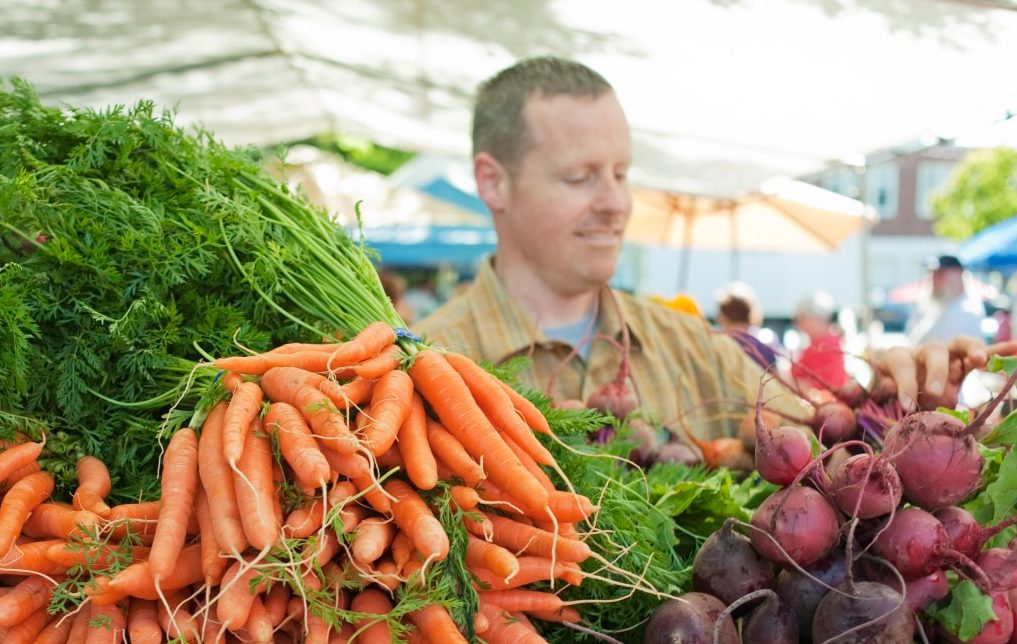The Engine 2 Diet Will Fire You Up

Plant-based whole foods can trigger weight loss and lower your cholesterol. Here’s how you can use the Engine 2 diet to get your weight under control.
The Engine 2 diet (or E2) is a prescription for eating, and a philosophy about health and lifestyle. It was developed by Rip Esselstyn, a former All-American swimmer and professional triathlete, who, after retiring, became a firefighter in Austin, Texas.
Some of his fellow firefighters were struggling with their health. Using the knowledge Esselstyn had gained as a professional athlete, he developed a diet and exercise program that resulted in colleagues losing weight and significantly lowering their cholesterol. The plan is detailed in his book “The Engine 2 Diet.” In a second book, “My Beef With Meat,” Esselstyn dives into research showing how the Engine 2 way of plant-based eating can optimize health and ultimately save lives. The book also provides additional recipes to help people giving up meat find tasty alternatives.
YOU MIGHT ALSO LIKE: Our Popular Diets section
E2 is a plant-based diet that eliminates processed foods and emphasizes many whole foods. The term “whole foods” generally refers to:
- Organic or minimally treated fruits, vegetables, whole grains, legumes, and nuts
- Organically raised meats and wild caught or sustainably raised seafood
- Unprocessed dairy products and free-range eggs
Whole foods are not genetically modified and have no colors, preservatives, or other additives. Basically, they come from the farm to your table by the most direct route possible.
E2 is not strictly a whole foods diet. For example, whole milk is considered to be a whole food, and all dairy products are eliminated from the E2 style of eating. No meat (whether organic or not) is included in the E2 diet. Vegetable oils are not part of the diet.
Esselstyn describes the E2 diet as relying on foods that are “plant-strong.” In fact, E2 is a vegan diet — a more restrictive form of vegetarianism that excludes dairy and eggs and any products containing them.
Much of Esselstyn’s eating program is backed by science. Eating a diet rich in whole plant foods has been proven to have many benefits. Whole foods typically provide greater nutrition than processed foods, including many vitamins, minerals, phytochemicals and antioxidants.
Because the diet lacks animal products, however, you may need supplements or fortified foods to meet your body's nutritional needs, including adequate vitamins D and B12 if you follow the E2 eating plan. You may also need fish oil supplements for omega-3 fatty acids docosahexaenoic acid (DHA) and eicosatetraenoic acid (EPA).
Both vegetarian and vegan diets are effective at reducing the risk of developing cardiovascular disease and certain cancers, lowering cholesterol and blood pressure, and avoiding or controlling type 2 diabetes. Vegan diets are particularly effective for weight loss. A US News and World Report on the best diets rates the Engine 2 diet as especially good at promoting heart health, helping prevent or treat type 2 diabetes, and keeping weight under control.
E2 offers three approaches to realizing the benefits of a vegan diet, depending on whether you want to immediately go all in or immerse yourself more slowly:
- Firefighter — You’re ready to commit 100 percent to the program from day one, eliminating all animal products, processed foods, and extracted vegetable oils from your diet.
- Fire cadet — This more gradual approach eliminates dairy, refined sugar, and processed foods in week one; red meat, poultry, fish, and eggs in week two; and extracted vegetable oils in week three.
- Volunteer firefighter — This is for people who are curious about learning to incorporate more plants into their diet.
This diet may be a significant departure from how you’re used to eating, but, regardless of your dietary habits, E2 requires planning. Esselstyn takes this into account and offers a variety of guides and support in his books and on his Plantstrong website.
One of the tools is his Engine 2 Seven Day Rescue Diet book, which includes:
- Questions and answers about getting key nutrients like protein and calcium
- A guide to what to get rid of and what to stock up on in your kitchen
- A guide to label reading to help you avoid hidden ingredients
- “Rips Tips” for things like how to cook without oil and substitutes for salt and sugar
- An extensive collection of recipes
- Stretching and exercise guides, including videos on the website
You can also find tips for eating the E2 way in Esselstyn’s YouTube video, “The Seven Day Rescue Challenge.”
If you’ve been curious about exploring a vegetarian or vegan diet, need to lose weight, or have health conditions, the Engine 2 Diet may be a good one for you to consider. No indications of serious risks or side effects from the diet have surfaced.
It’s not for everyone. If you have celiac disease or are sensitive to wheat or other grains, this diet may not be for you. It’s also heavy on soy products, which have been shown to mimic estrogen and may not be appropriate for women (and men) at risk for breast cancer or who are survivors.
Talk with your doctor, especially if you have a health problem, before going vegan. In fact, Esselstyn strongly urges all who are interested in starting the Engine 2 to have baseline tests for blood fats, blood sugar, blood pressure, and body fat.
If you are pregnant, breastfeeding, or preparing meals for growing children and teenagers, this diet takes planning to ensure you meet nutritional requirements. It also includes a lot of cooking, which may require a significant change in your lifestyle and therefore make the diet more challenging to stay on.
Updated:
May 02, 2022
Reviewed By:
Janet O’Dell, RN